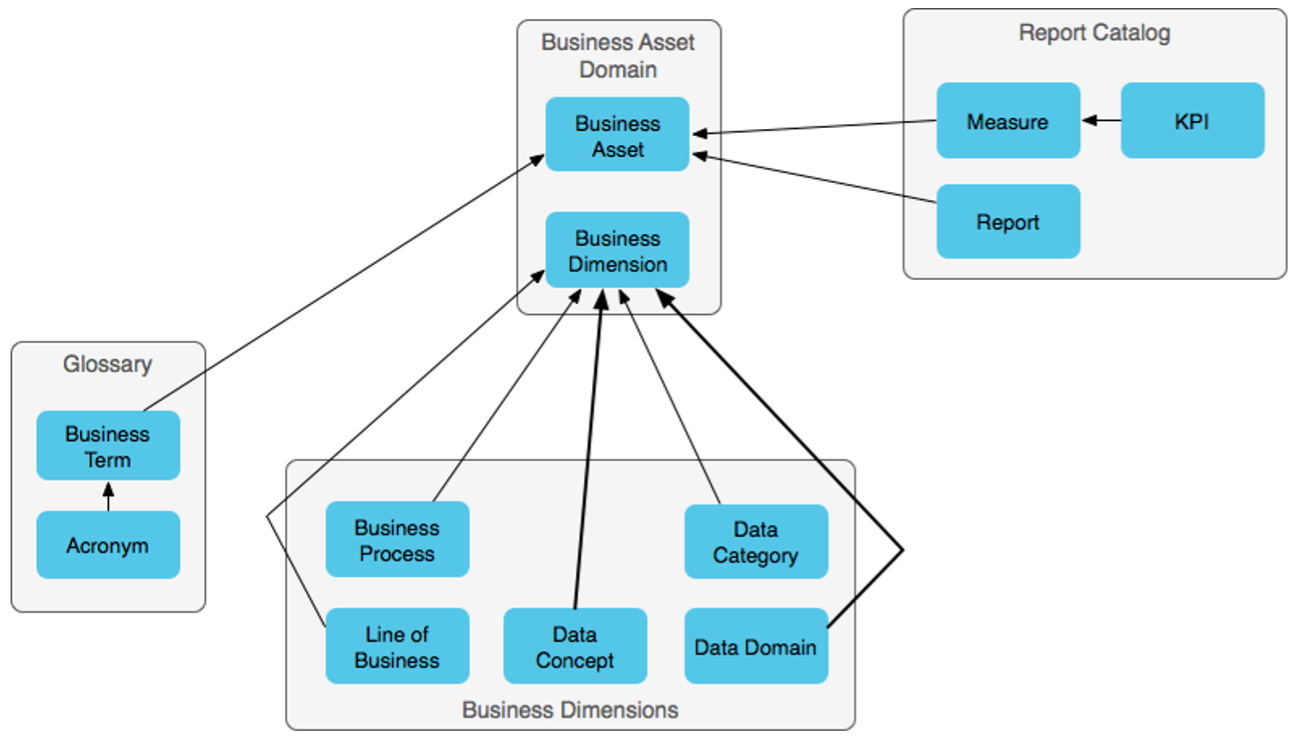The following table shows the most relevant child asset types of Business Assets.
| Asset type | Description |
|---|---|
| Party | An association, corporation, partnership, proprietorship, trust, or individual that has legal standing. A party has legal capacity to enter into agreements or contracts, assume obligations, incur and pay debts, sue and be sued, and to be held responsible for its actions. |
| Business Process | A set of activities and tasks that, once completed, produce a specific result and add value to the business. Examples: campaign management, talent recruitment and staffing. |
|
Line of Business |
Also known as a business unit or a business area, the line of business is a logical element or segment of an organization that serves a particular business need. Examples: asset management, retail, e-com, investment management. |
|
Data Category |
A data category is a grouping of information relating to an individual, be it their private, professional or public life. Data categories are not exclusive; information can transcend multiple categories. |
| Data Subject Category | A way in which a user can interact with data at rest, with manual intervention, to manipulate or consolidate data. |
| Jurisdiction | A hierarchical representation of how a business divides its market on the basis of geography, such as regions and countries. For example, North America is segmented into USA and Canada. |
Business Assets by domain
